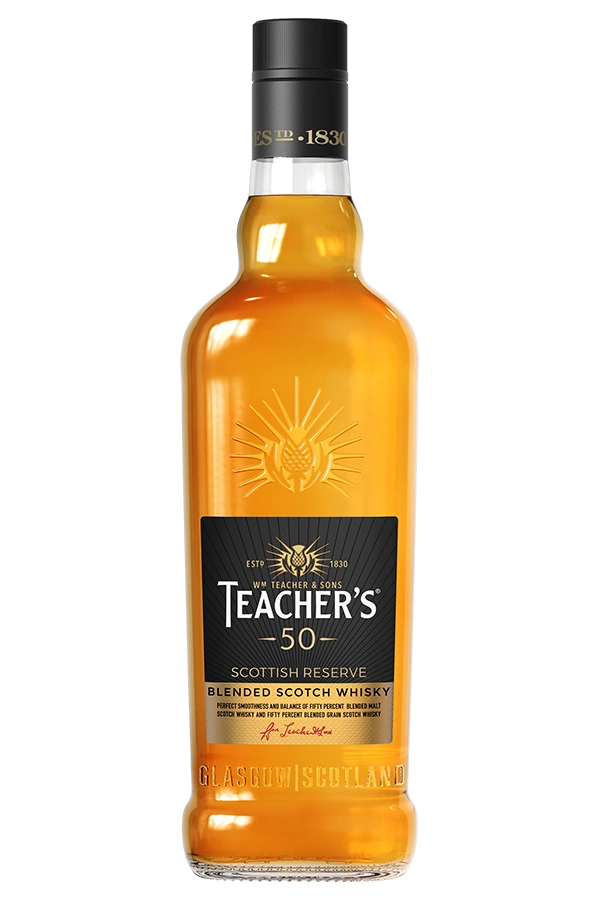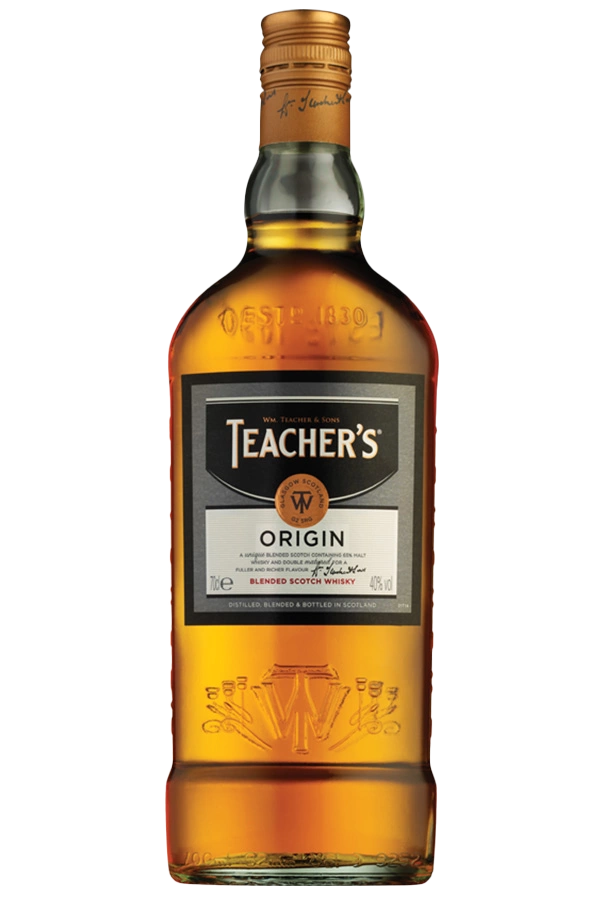
Teacher's History
1830. The early years
In 1830 William Teacher obtained a license to sell whisky from a grocer’s shop in the Anderson district of Glasgow. The shop was owned by the mother of his girlfriend, Agnes MacDonald. William married Agnes in 1832 and went on to open the first ‘dram shop’ in Piccadilly Street where customers could stop by and enjoy a glass of fine whisky. In 1836 - when opening his second shop - William secured a license to sell bottled whisky. With a booming population in Glasgow (doubling since the turn of the century), it wasn’t long before Teachers had a chain of nearly 20 dram shops where customers could sit and enjoy their drams and also purchase a bottle to take home.
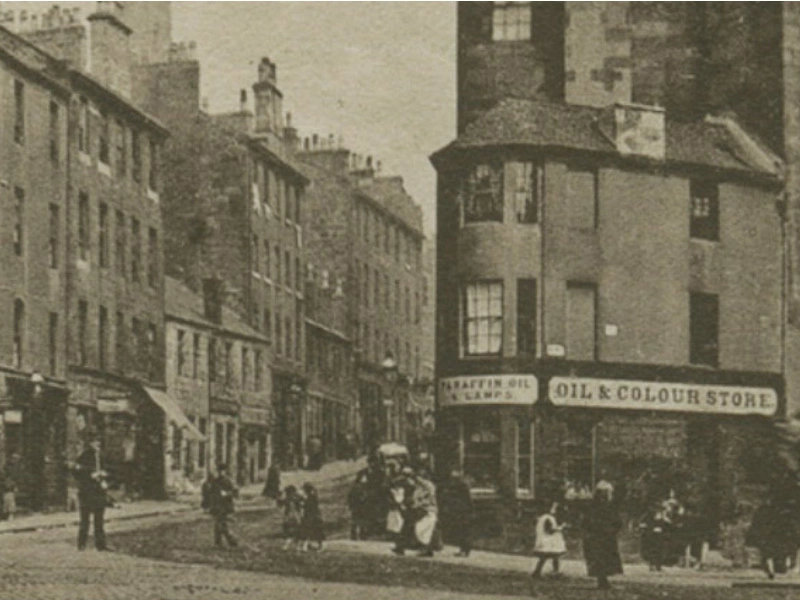
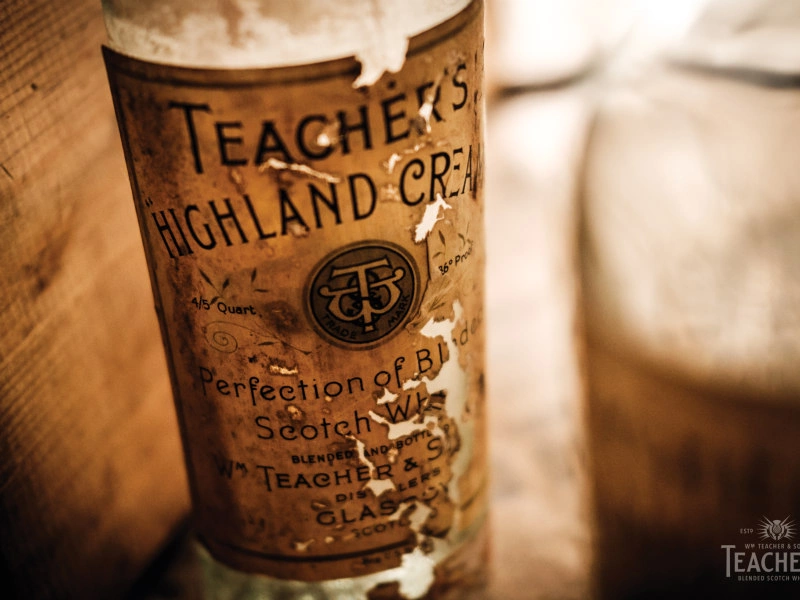
1860
When the Spirits Act was passed in 1860, William Teacher was legally allowed to experiment and create his own whisky for sale in his dram shops. It was during this time that William Teacher crafted a whisky with an unusually high peated malt content. It had such a deep rich flavour and unique flavour profile that he considered it perfection itself and it was this whisky that Teacher considered good enough to carry his name. And so Teacher’s Highland Cream came into being.
1876 William Teacher & Sons Ltd
When William Teacher died, less than 15 years later in 1876, it was his second son William Junior and his younger brother Adam that worked to keep their father’s spirit alive. The company became known as William Teacher & Sons Ltd and it was their forays into the business of exporting that proved key to the growth of the company.


1890s. The boom years
The first exports left the UK in around 1878 destined for New Zealand, shortly followed by shipments to Norway, Italy, the West Indies, Australia and Thailand. It was around this time that merchants had begun to recognise the value of maturing spirit in oak barrels over a period of time. As vessels travelling overseas needed weight or ballast to stabilise them, Teacher’s took to transporting barrels of whisky to Australia by sea then bringing them back to Scotland. The weight of the whisky was used to stabilise the vessels, but more importantly it provided time for the spirit to mature. Up until this point, the company had been totally dependent on outside distilleries for its supply of whisky but Adam Teacher was to change all of that.
1895
In 1895 Adam Teacher took the significant step of purchasing land in Aberdeenshire at the highest point of the Northern railway line, 600 feet above sea level.
The proximity of the railway line was critical as it allowed the transportation of materials from Glasgow to this remote corner of Scotland. Building work on the distillery started in 1897, but as Adam died just a year later, he never got to see his distillery finished.
For many years the distillery relied on a single pair of stills. These were doubled in 1955 and again in 1974. The distillery now boasts 8 uniquely shaped copper stills. Whilst the water is still drawn from the springs that sits on the 1,500 ft Knockandy Hill.
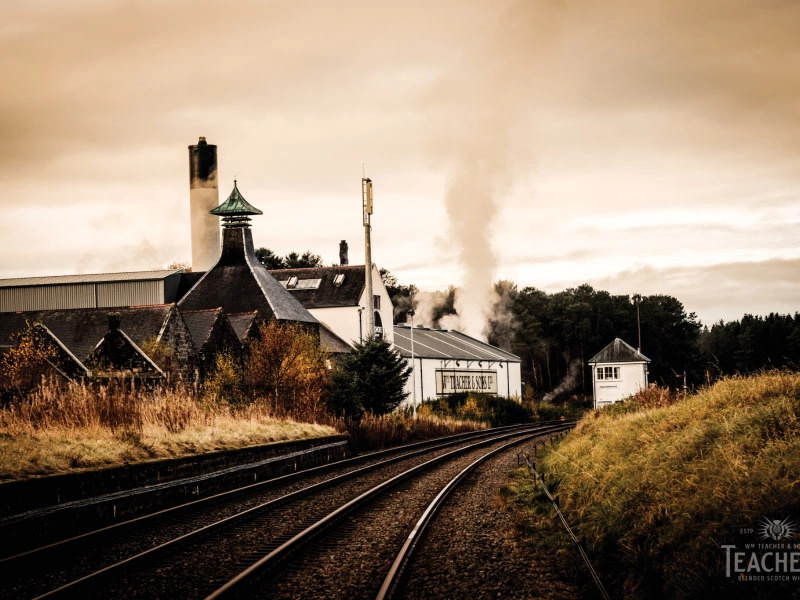

Modern history
The Scotch whisky market at the start of the twentieth century appeared robust but the good times didn’t last and the number of operating distilleries dropped from over 150 down to around just 15. Economic depression and the Temperance movement alongside rising tax levels in the UK all contributing to this turn of events.
1933
The tide changed however and in 1933 with the end of prohibition, legal trade to America resumed and it was during this year that Teacher’s shipped their first consignment on the Cunard Steamer Scythia. The company continued to grow and in 1960 the Glendronach distillery was acquired and a new blending facility was in constructed in Glasgow 2 years later.
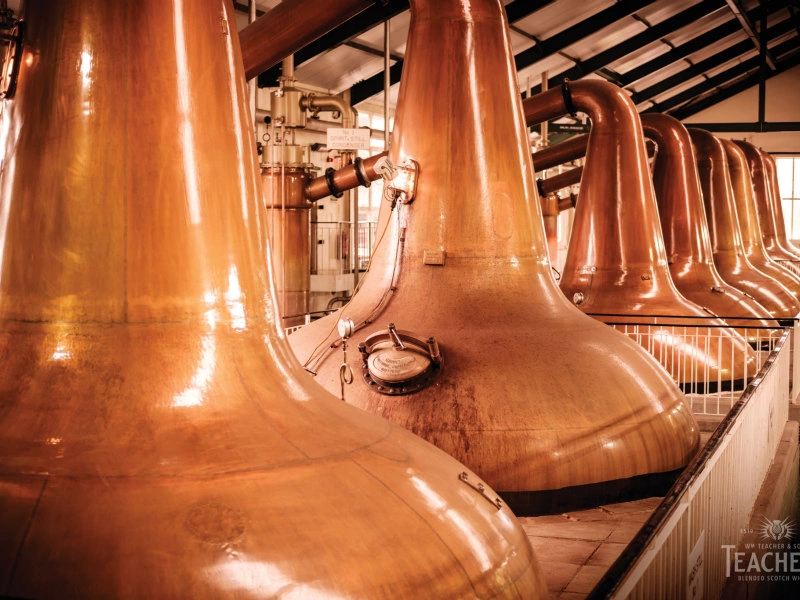
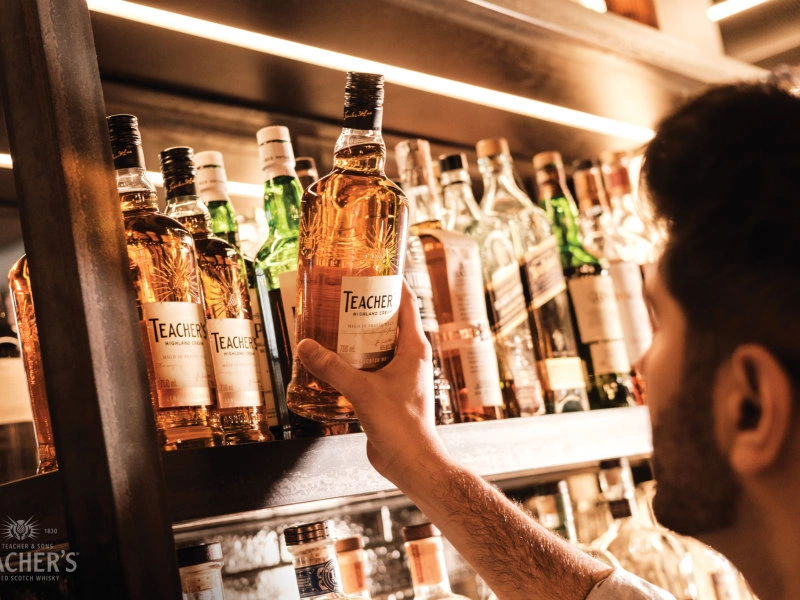
1976
In 1976 Allied Breweries took over Teacher’s and in the late 1980s, Teacher’s Highland Cream was the best selling blend in the UK with over 150 export markets and notable success in India. Allied Breweries sold off its spirits assets and Jim Beam® took over Ardmore and the Teacher’s brand. In 2014 these were then purchased alongside other Beam assets to Suntory Holdings of Japan.

1830. The early years
In 1830 William Teacher obtained a license to sell whisky from a grocer’s shop in the Anderson district of Glasgow. The shop was owned by the mother of his girlfriend, Agnes MacDonald. William married Agnes in 1832 and went on to open the first ‘dram shop’ in Piccadilly Street where customers could stop by and enjoy a glass of fine whisky. In 1836 - when opening his second shop - William secured a license to sell bottled whisky. With a booming population in Glasgow (doubling since the turn of the century), it wasn’t long before Teachers had a chain of nearly 20 dram shops where customers could sit and enjoy their drams and also purchase a bottle to take home.

1860
When the Spirits Act was passed in 1860, William Teacher was legally allowed to experiment and create his own whisky for sale in his dram shops. It was during this time that William Teacher crafted a whisky with an unusually high peated malt content. It had such a deep rich flavour and unique flavour profile that he considered it perfection itself and it was this whisky that Teacher considered good enough to carry his name. And so Teacher’s Highland Cream came into being.

1876 William Teacher & Sons Ltd
When William Teacher died, less than 15 years later in 1876, it was his second son William Junior and his younger brother Adam that worked to keep their father’s spirit alive. The company became known as William Teacher & Sons Ltd and it was their forays into the business of exporting that proved key to the growth of the company.

1890s. The boom years
The first exports left the UK in around 1878 destined for New Zealand, shortly followed by shipments to Norway, Italy, the West Indies, Australia and Thailand. It was around this time that merchants had begun to recognise the value of maturing spirit in oak barrels over a period of time. As vessels travelling overseas needed weight or ballast to stabilise them, Teacher’s took to transporting barrels of whisky to Australia by sea then bringing them back to Scotland. The weight of the whisky was used to stabilise the vessels, but more importantly it provided time for the spirit to mature. Up until this point, the company had been totally dependent on outside distilleries for its supply of whisky but Adam Teacher was to change all of that.

1895
In 1895 Adam Teacher took the significant step of purchasing land in Aberdeenshire at the highest point of the Northern railway line, 600 feet above sea level.
The proximity of the railway line was critical as it allowed the transportation of materials from Glasgow to this remote corner of Scotland. Building work on the distillery started in 1897, but as Adam died just a year later, he never got to see his distillery finished.
For many years the distillery relied on a single pair of stills. These were doubled in 1955 and again in 1974. The distillery now boasts 8 uniquely shaped copper stills. Whilst the water is still drawn from the springs that sits on the 1,500 ft Knockandy Hill.

Modern history
The Scotch whisky market at the start of the twentieth century appeared robust but the good times didn’t last and the number of operating distilleries dropped from over 150 down to around just 15. Economic depression and the Temperance movement alongside rising tax levels in the UK all contributing to this turn of events.

1933
The tide changed however and in 1933 with the end of prohibition, legal trade to America resumed and it was during this year that Teacher’s shipped their first consignment on the Cunard Steamer Scythia. The company continued to grow and in 1960 the Glendronach distillery was acquired and a new blending facility was in constructed in Glasgow 2 years later.

1976
In 1976 Allied Breweries took over Teacher’s and in the late 1980s, Teacher’s Highland Cream was the best selling blend in the UK with over 150 export markets and notable success in India. Allied Breweries sold off its spirits assets and Jim Beam® took over Ardmore and the Teacher’s brand. In 2014 these were then purchased alongside other Beam assets to Suntory Holdings of Japan.


